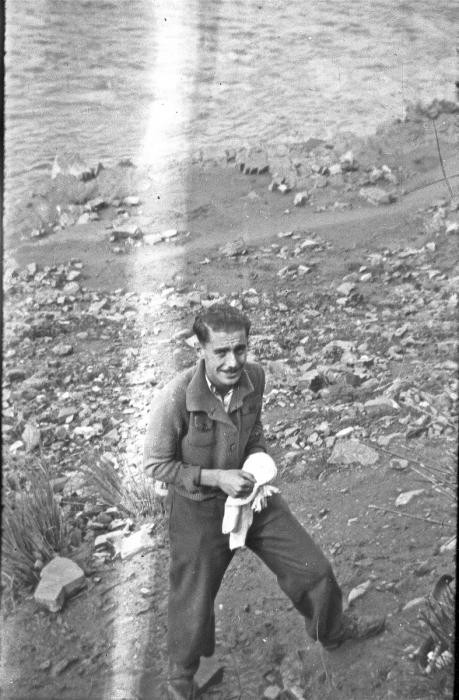
Sami Dorra working at dam construction in the Im Fout labor camp. The camp was approximately 59 miles southwest of Casablanca, and housed a group of foreign workers. Im Fout, Morocco, 1941-42.
Item View
View of the dam being built by forced laborers from the Im Fout labor camp in Morocco. Photograph taken 1941-42.
Item View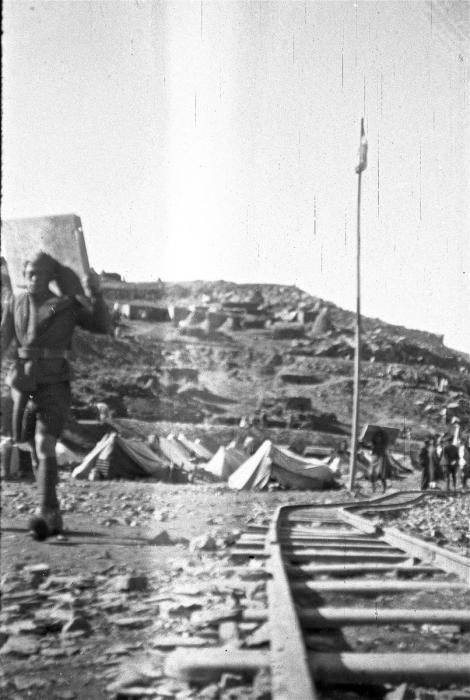
An unidentified worker walks by the railroad tracks at the Im Fout labor camp in Morocco. Living conditions were harsh in the camp, and many of the workers fell ill with typhus. Im Fout, Morocco, 1941-42.
Item View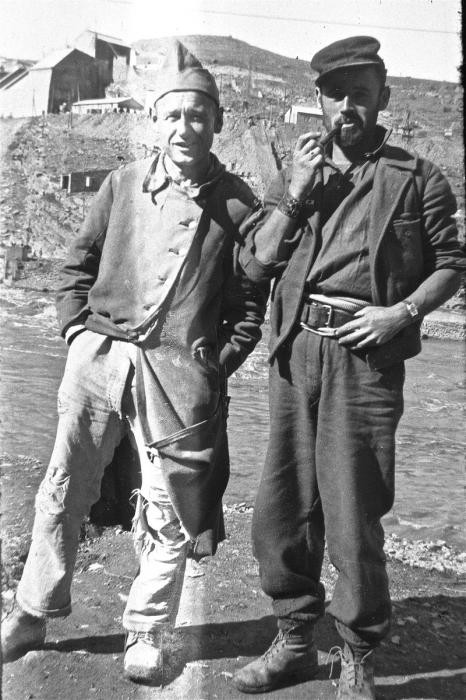
Close-up portrait of two prisoners in the Im Fout labor camp in Morocco. The camp was approximately 59 miles southwest of Casablanca, and housed a group of foreign workers. Many of the prisoners fell ill because of poor living conditions in the camp. Im Fout, Morocco, 1941-42.
Item View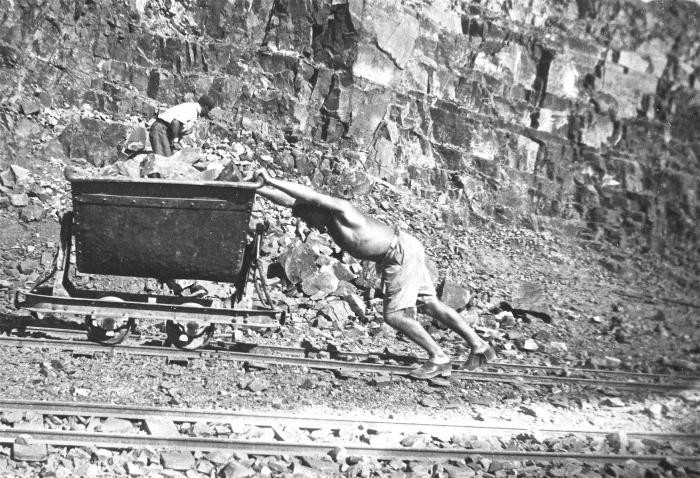
A German Jewish prisoner named Rosenthal pushes a cart in the stone quarry of the Im Fout labor camp in Morocco. The camp housed a group of foreign workers, many of whom fell ill because of poor living conditions. Im Fout, Morocco, 1941-42.
Item View
Sketch from the scrapbook of Donald Coster presented to him during his inspection of the internment camp in Djelfa. The page is entitled, "Gulliver's travels to Djelfa." Djelfa, Algeria, ca. 1942.
Item View
Sketch from the scrapbook of Donald Coster presented to him during his inspection of the internment camp in Djelfa. The page is entitled, "All roads don't lead to Rome." Djelfa, Algeria, ca. 1941.
Item View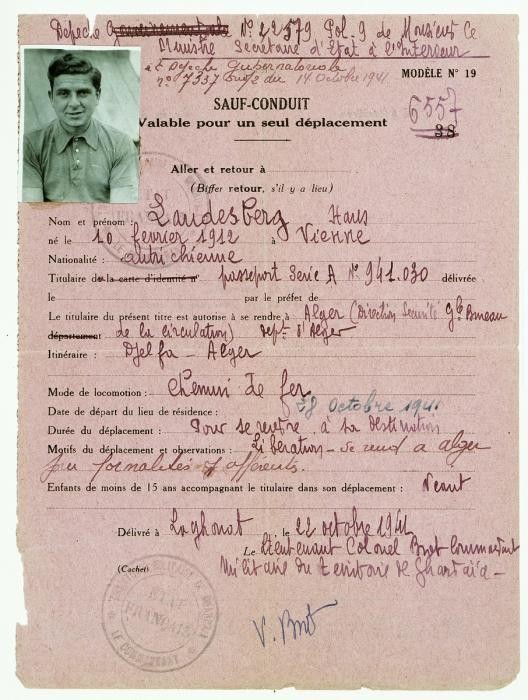
Safe conduct pass issued to Hans Landesberg in the Djelfa internment camp, releasing him to leave for Algiers. Djelfa, Algeria, January 26, 1943. Hans was born in Vienna, Austria, and went to medical school. After graduating, he left for Paris and joined a battalion of the International Brigade to fight in the Spanish Civil War. He returned to France in February 1939, only to be interned first in Argeles and then in Gurs. Some time after the French surrender to Nazi Germany in June 1940, Hans and other political prisoners were transported to the fortress of Mont-Louis near Andorra. Hans was then deported on a freighter to Oran, Algeria. From Oran, he was sent first to Algiers. In 1941, Hans reached Djelfa, an internment camp where the prisoners were housed in tents. He eventually received this safe conduct pass after writing to authorities that in 1939 he had begun the process to obtain an immigration visa to the United States.
Item View
We would like to thank Crown Family Philanthropies, Abe and Ida Cooper Foundation, the Claims Conference, EVZ, and BMF for supporting the ongoing work to create content and resources for the Holocaust Encyclopedia. View the list of donor acknowledgement.